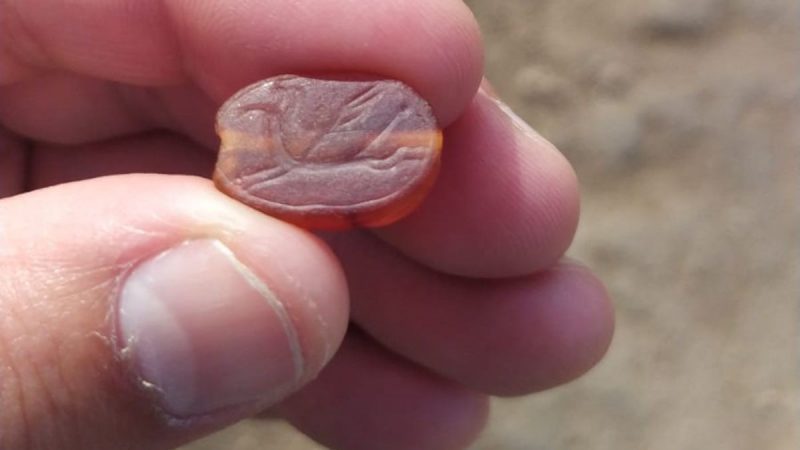There are many items from the past that give us a glimpse of a once-flourishing dynasty. With these scattered around the globe, sometimes it’s quite easy to chance upon them even as you are strolling. Something similar happened with an Israeli army reservist, who stumbled upon a 2,800-year-old Assyrian Scarab Amulet. Here’s all you need to know about the artefact.
2,800-year-old Assyrian Scarab Amulet Found In Israel
According to a post by the Antiquities Authority, it was revealed that an Israeli army reservist stumbled upon a 2,800-year-old Assyrian Scarab Amulet. This happened while he was taking a hike in Northern Israel’s Nahal Tabor Nature Reserve, on his day off.
As it happens, Erez Abrahamov, a 45-year-old resident from Paduel, decided to go on a hike on his leave day. During this trip, he stumbled upon the shimmering stone. At first, he thought that this was a Beatle or an orange stone, but after picking it up, he realised that this was something important and reported it to the Antiquities Authority.
This Was Revealed By The Antiquities Authority
After receiving the stone, it was analysed by Professor Emeritus Othmer Kiel, from the University of Friborg. During his analysis, it was found that the scarab had been crafted from Carnelian and it depicted a griffin or a winged horse taking a gallop. As it happens, it dates back to the eighth century BC. The site where the scarab was found, is one of the most important mounds in the region.
Why Were They Used?
It should be noted that the site of discovery is identified as Anaharath, which is a city that is referred to, in the book of Joshua as lying within the territory of the Issachar tribe. For those unaware, scarab seals were widely utilised across ancient civilisations. These often featured symbols of cultural and religious beliefs. Often fashioned from materials like Carnelian, these artefacts were not just decorative ornaments but also functional seals.
Cover Image Courtesy: X/AntiquitiesIL
For more such snackable content, interesting discoveries and the latest updates on food, travel and experiences in your city, download the Curly Tales App. Download HERE.

